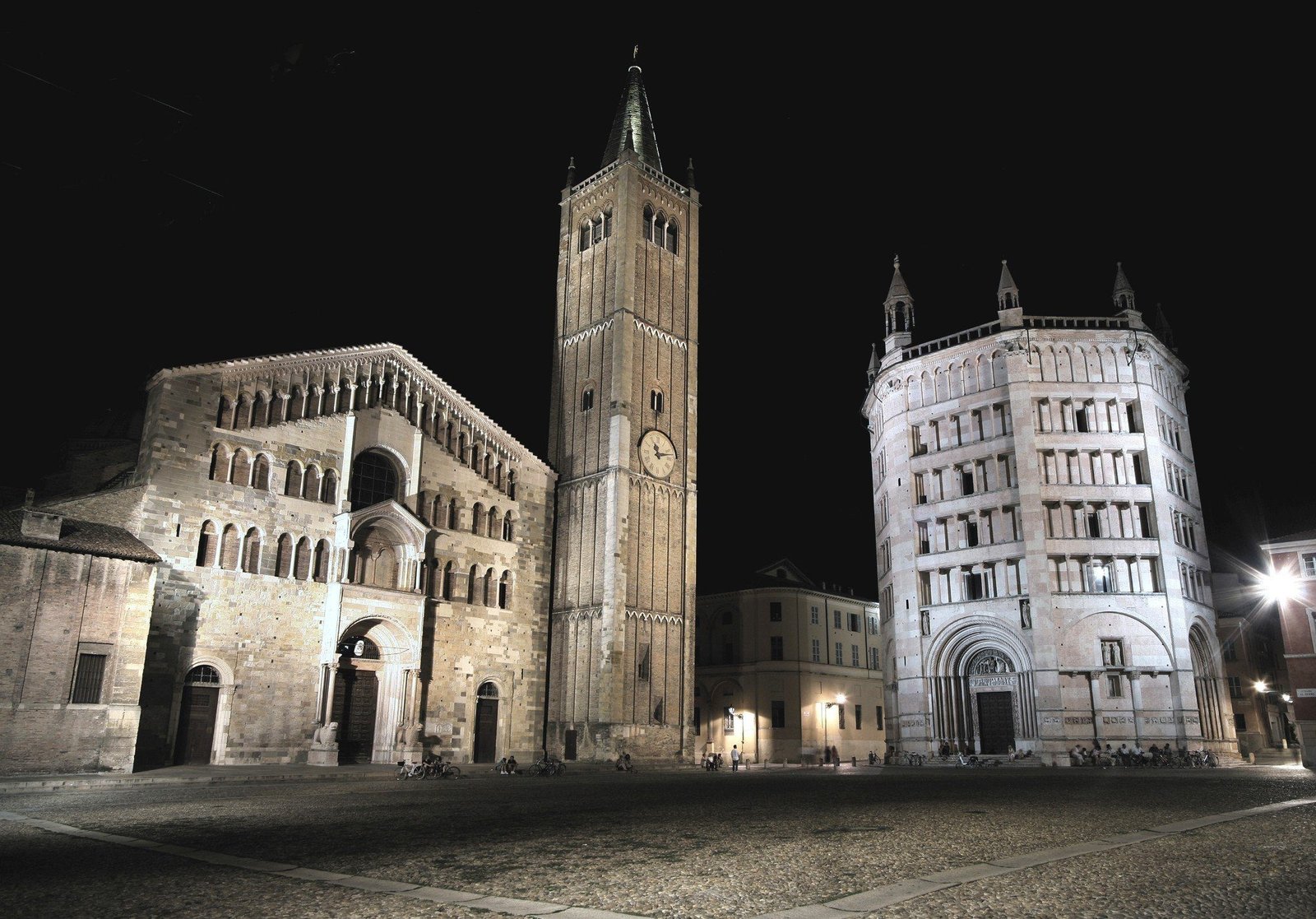
THE DUOMO
It has a Latin cross plan and is divided into three naves. The presbytery and transept are raised. It features cross vaults, a high dome, women's galleries, crypt, bundled pillars and side chapels.
THE STORY
The oldest records of organs in Parma Cathedral date back to the first half of the 15th century when Andrea da Rimini and his son Pellegrino built a new organ, commissioned by the then Suffragan Bishop of Parma, Domenico da Imola. A century later, in the history of Duomo organs, the name of one of the most illustrious Italian organ-building families appears, "the Antegnati", who between 1556 and 1560 built a large organ for the Duomo, initially placing it in the Chapel of St. Paul (then the People's Chapel), only to move it a few months later to the central nave, as according to the people, "the instrument was too big and its sound too loud". The Antegnati's magnificent organ lasted a couple of centuries, then succumbed to time and use; so at the end of the 18th century, it was decided to build a new organ. At the Fabbriceria meeting on 9 September 1786, Can. Conte Scutellari suggested the name of Giuseppe Serassi. The Fabbriceri, well persuaded of the skill of the organ builder from Bergamo, who was already known throughout Italy for his works, entrusted a commission formed by Scutellari and Alessandro Zanelli-Morandi to conduct the negotiations. In May 1787, the Serassi family began assembly work on the instrument in the Cathedral, and on 15 August of the same year, on the Feast of the Assumption, the completed organ was inaugurated by Maestro Don Antonio Toscani, to the great satisfaction of all those present. From the papers in the Chapter Archive it appears that the organ had 1487 pipes and two keyboards. According to the critics of the time, this instrument was considered 'for its architecture and goodness, excellent, one of the most stupendous organs of the Serassi brothers of Bergamo'. In 1865, the organ builder Antonio Sangalli carried out a restoration and some changes to the structural layout.
Around 1940, the Organ, including the case, was dismantled and partly deposited in the attics of the Cathedral; of the instrument, the case, labial pipes and manticeria remain; the mummers, keyboards and reeds are missing.
THE ORGAN
On the instructions of the Superintendency, a reconstruction project was drawn up for the instrument based on archive documents and a 1930 summary description by the cathedral organist Pietro Pallavicino. The case was restored and reassembled.
This was followed by the reconstruction of the "organ machine", which required particular design effort given the size of the instrument in relation to the available space, the narrowness of which is highlighted by the presence of tie rods supporting the chancel and the case, as well as the access passage to the chancel itself.
The sombers are made of walnut: the major one is 'a vento' with 30 combs, the one for the 'Echo', positioned behind the keyboards, is 'a tiro', divided into two sections (Basses and Sopranos). The 16′ Bass Principal is placed high up along the back wall; the Contrabasses (of 24′)+ Octave (of 12′) and Timbals are arranged on the sides. The five wedge bellows, which can be operated by hand with a rod, are placed in the women's gallery above; a wedge bellows 'antiscosse' is in the basement.
TECHNICAL FEATURES
Located in the choir loft on the left-hand side of the Cathedral, the instrument consists of two 59-key keyboards (C-1 - D5) with a short first octave: First Organ on the upper keyboard, Echo Organ on the lower keyboard (real from C1), 17-key Lectern Pedalboard (C-1 - G#1) with a short first octave + drum pedal.
Registers operated by movable and interlocking handles, arranged in two columns, for the First Organ and by knob pulls in a single column to the left of the above for the Echo Organ.
Air pressure: 48 mm.
Chorister: La 449 Hz at 17°.
Temperament: Tartini - Vallotti
| FIRST ORGAN (Second keyboard) |
| Main Bassi 16′ (32′) |
| Principal Soprani 16′ |
| Main I Bassi |
| Principal Sopranos |
| Main II Bass |
| Principal II Sopranos |
| Eighth Basses |
| Eighth Sopranos |
| XII |
| XV |
| XIX |
| XXII |
| XXVI-XXIX |
| XXVI-XXIX |
| XXXIII-XXXVI |
| ORGANO ECO - (First keyboard) |
| Main Bassi |
| Principal Sopranos |
| Ottava |
| XV |
| XIX |
| XXII |
| XXVI |
| XXIX |
| Sesquialtera |
| Flute in VIII Sopranos |
| Cornetto Soprani |
| Bass Cello |
| Soprani Cello |
Accessories
Combination prepared Lombard-style
Keyboard Union
Third hand
Drum
